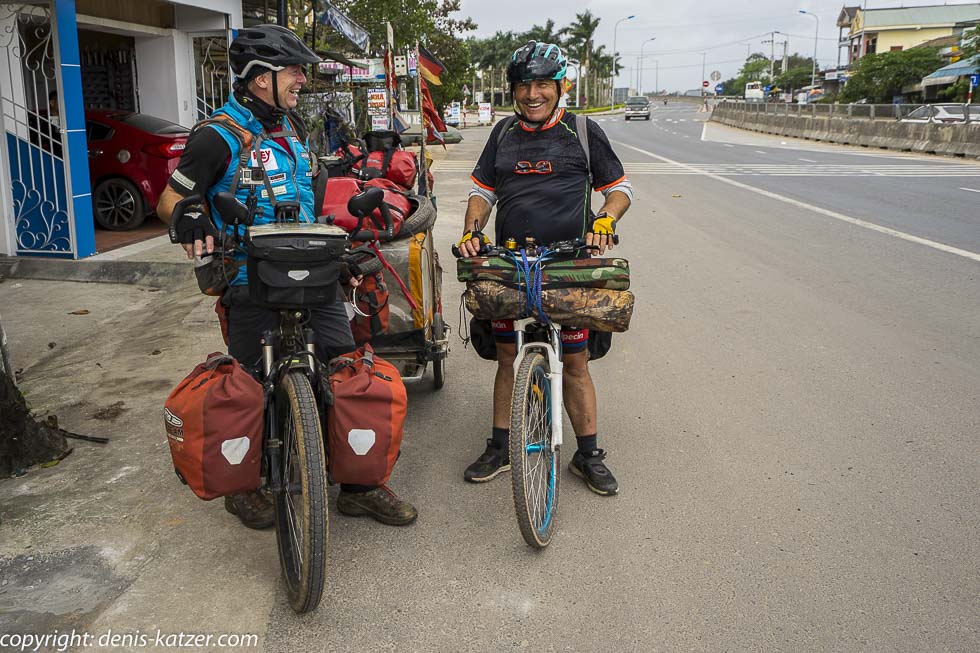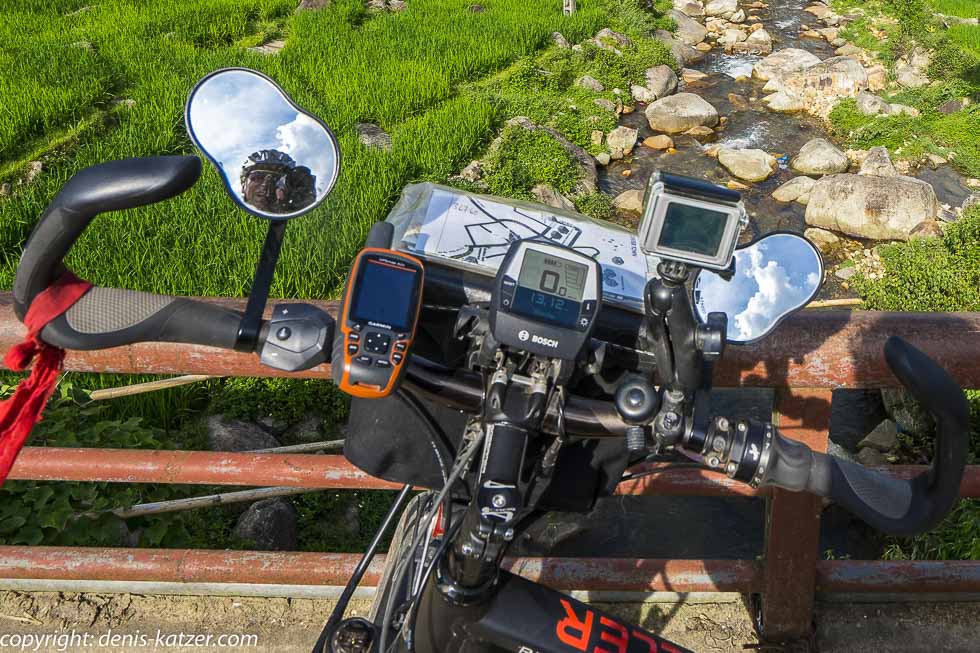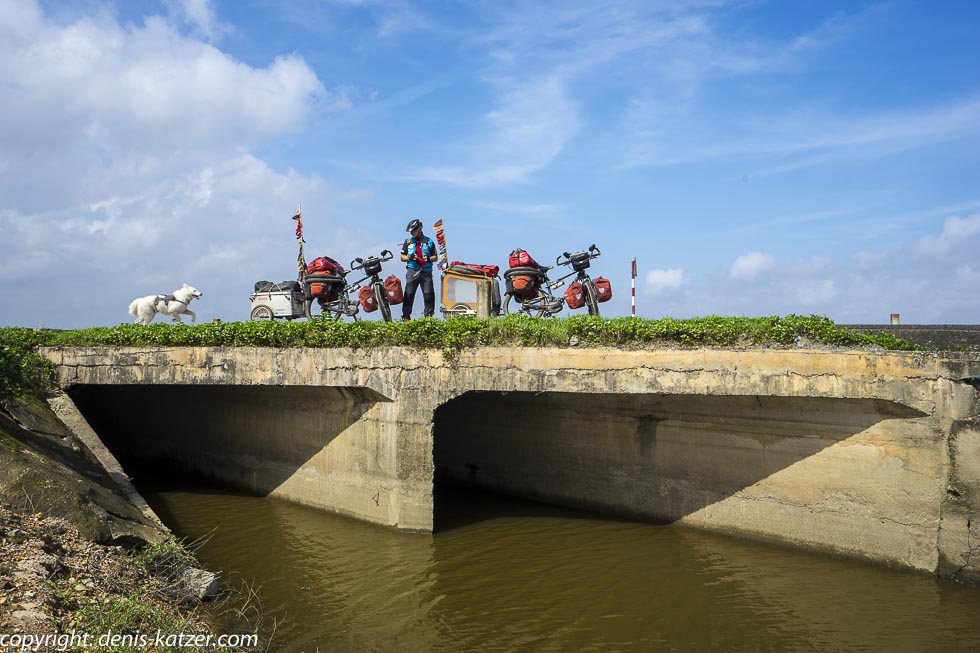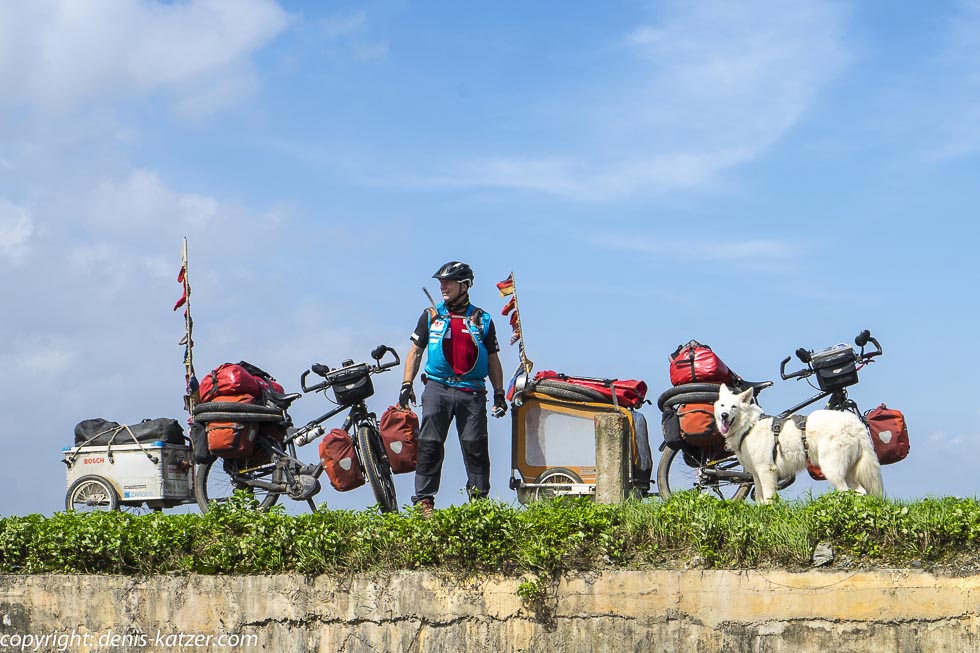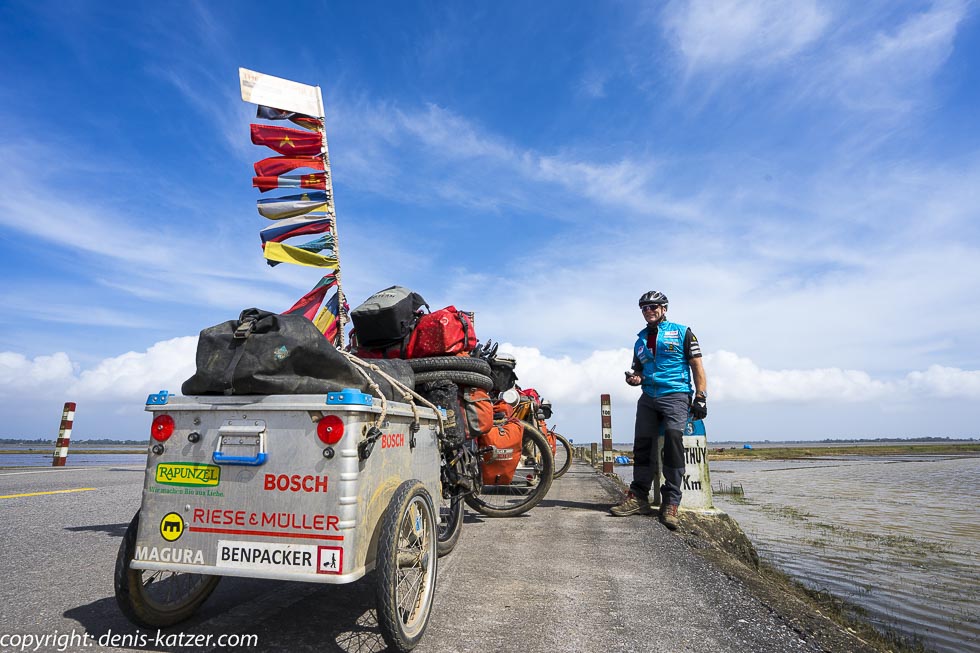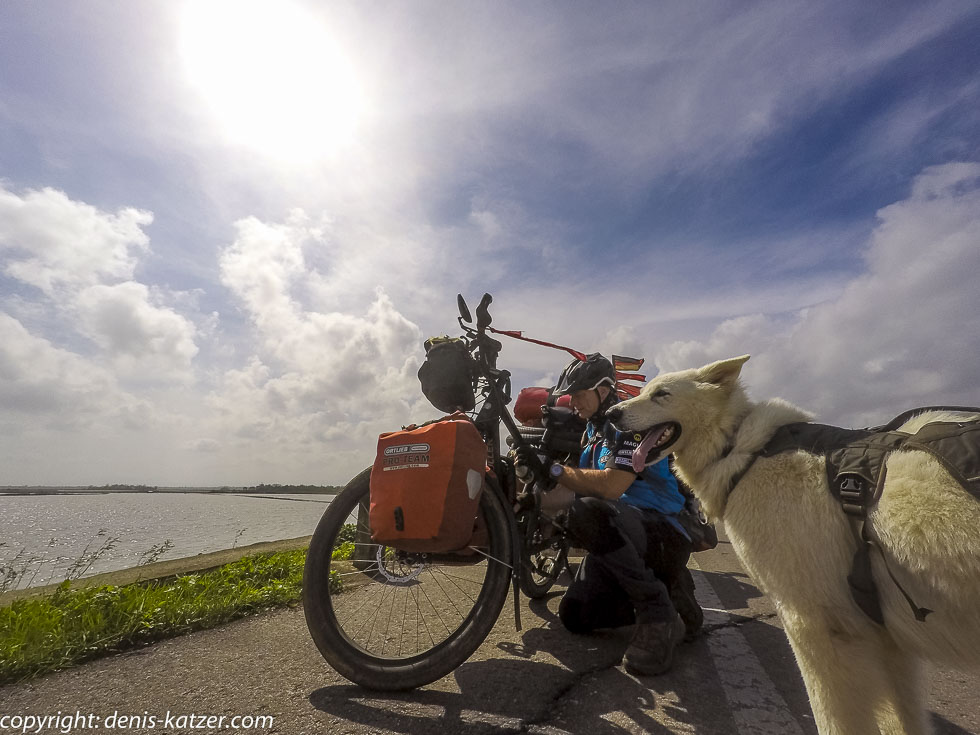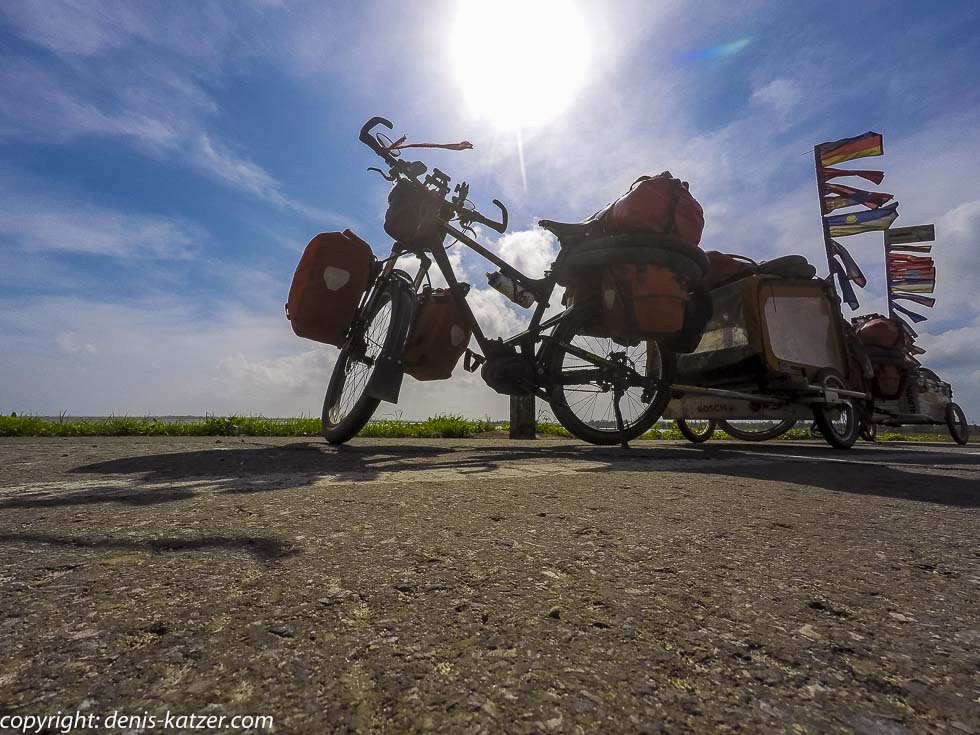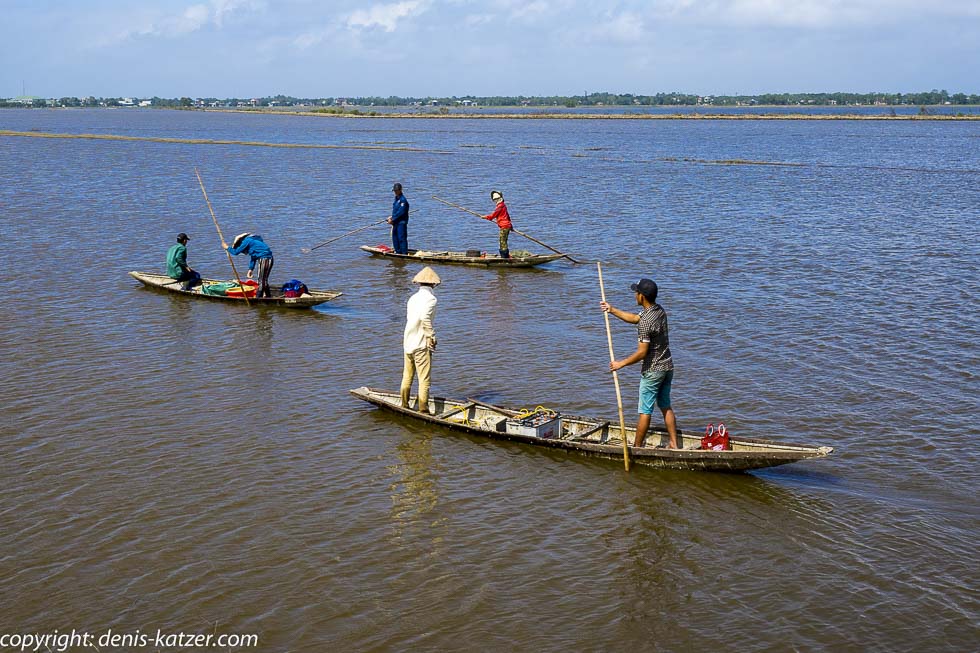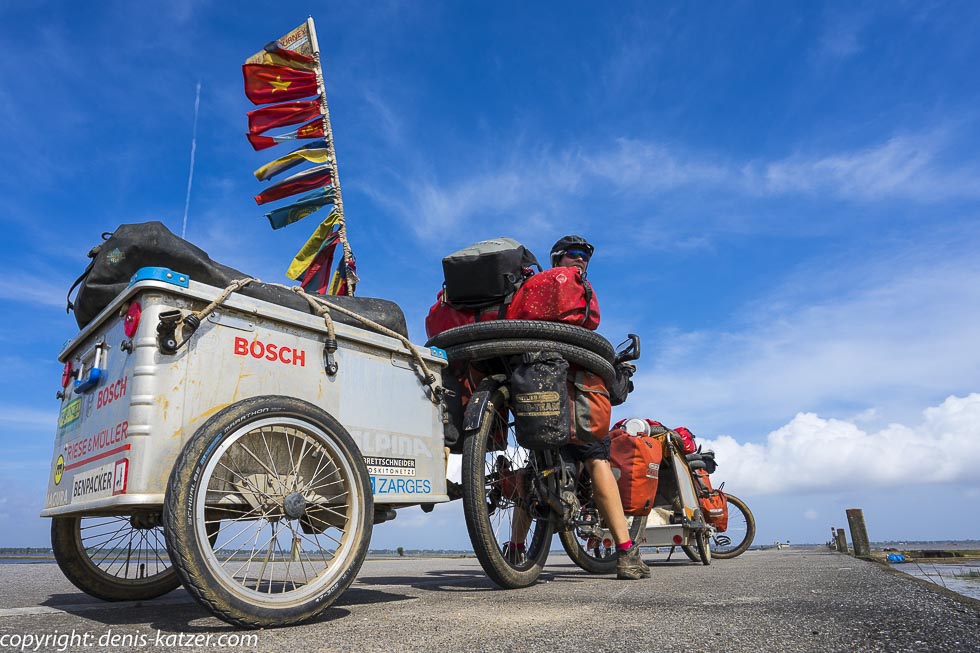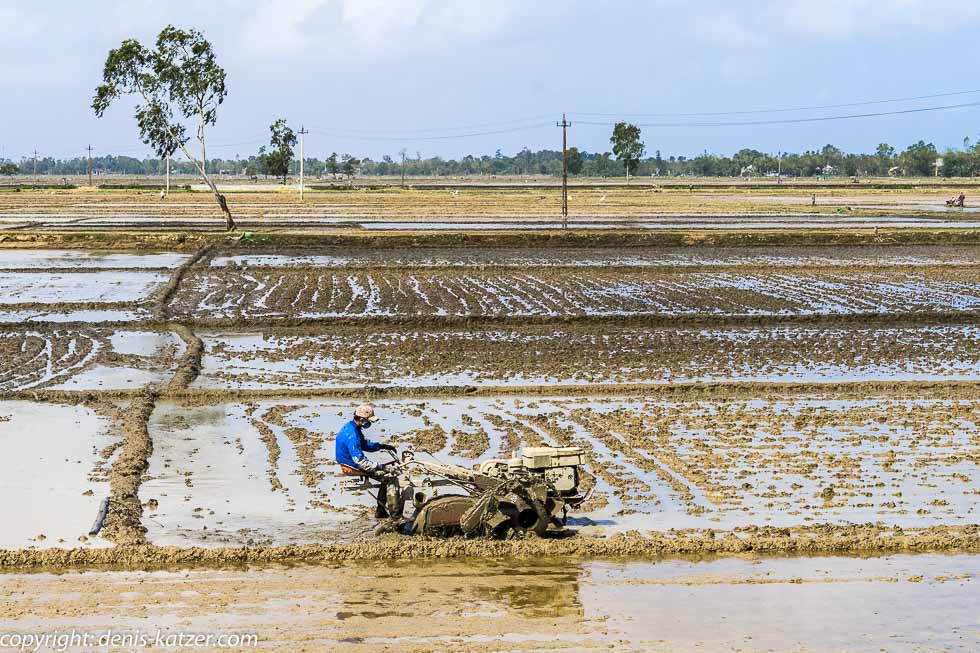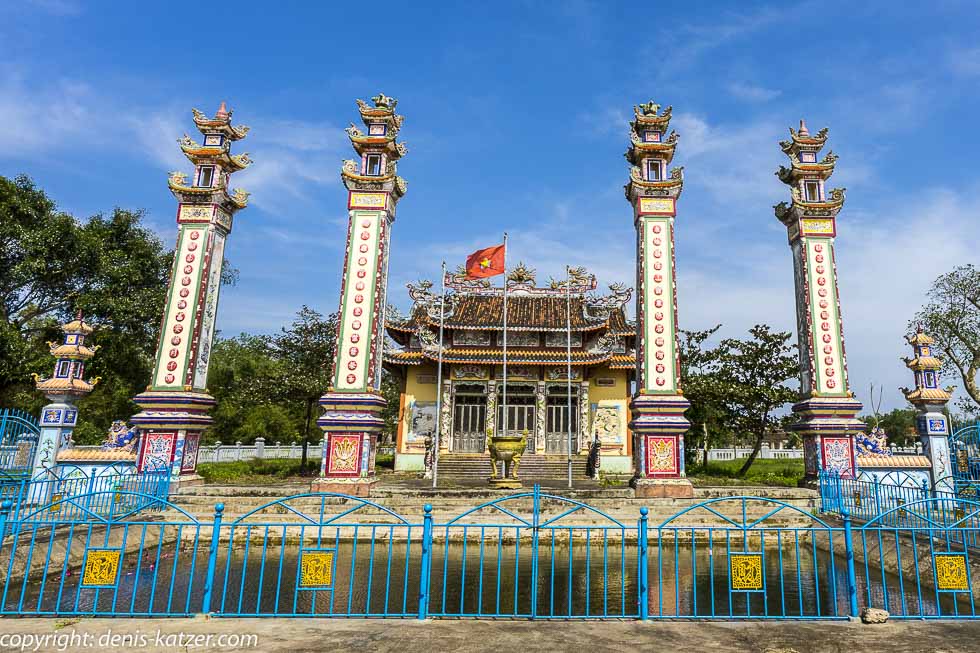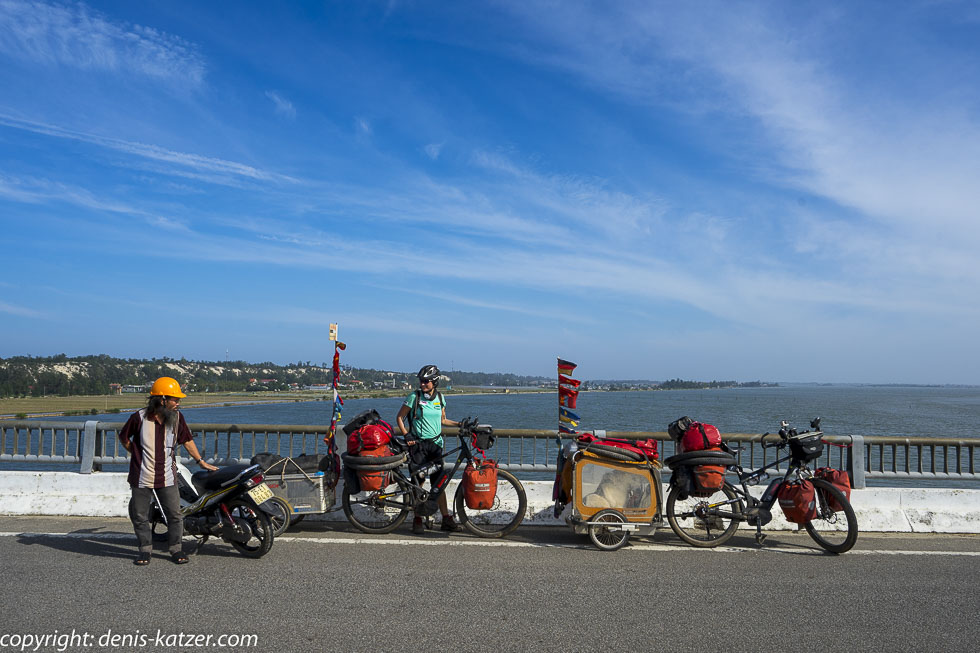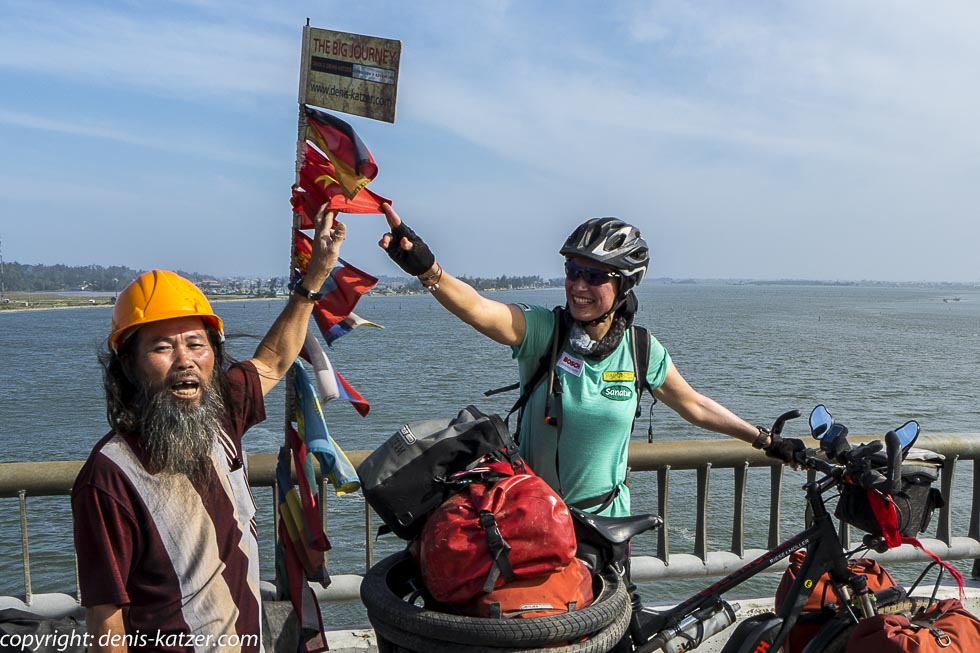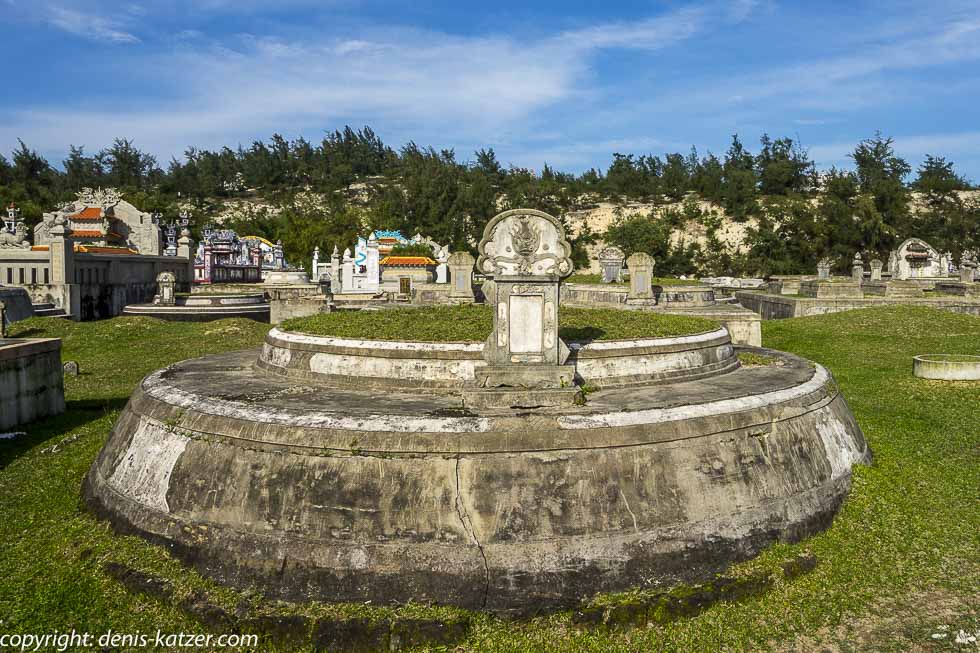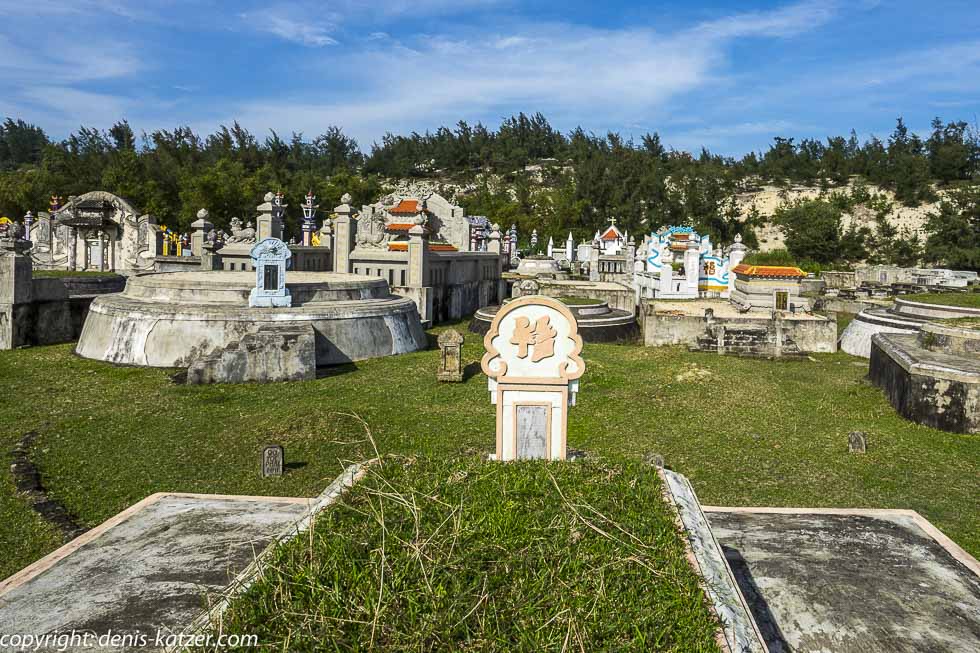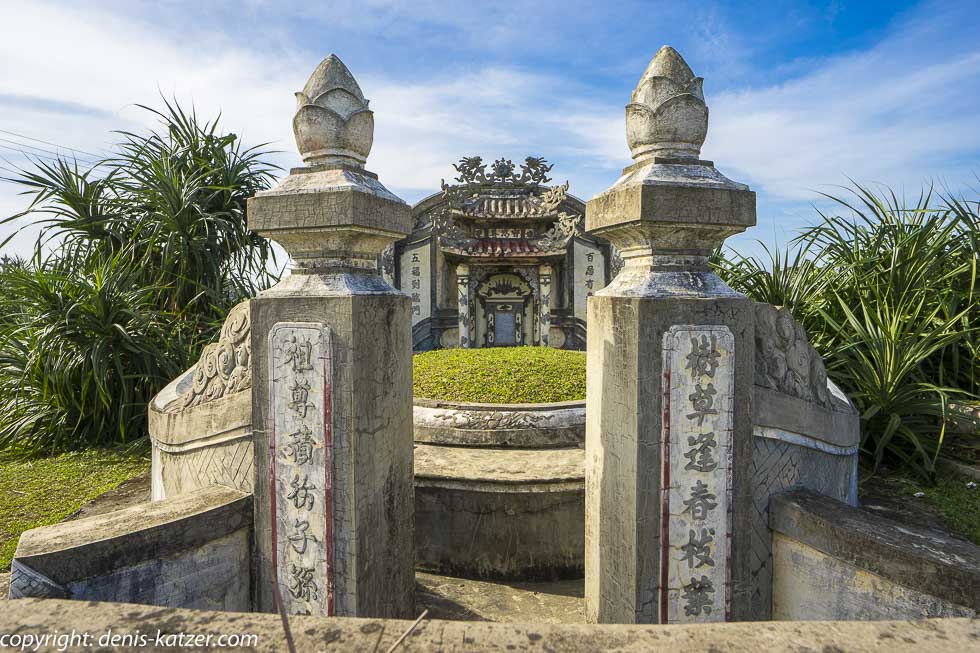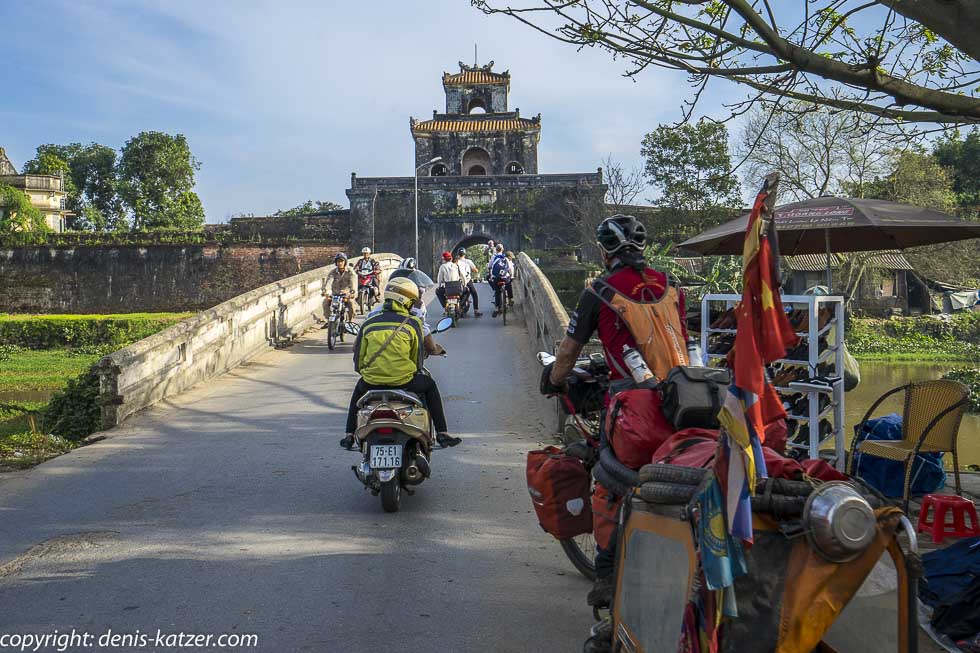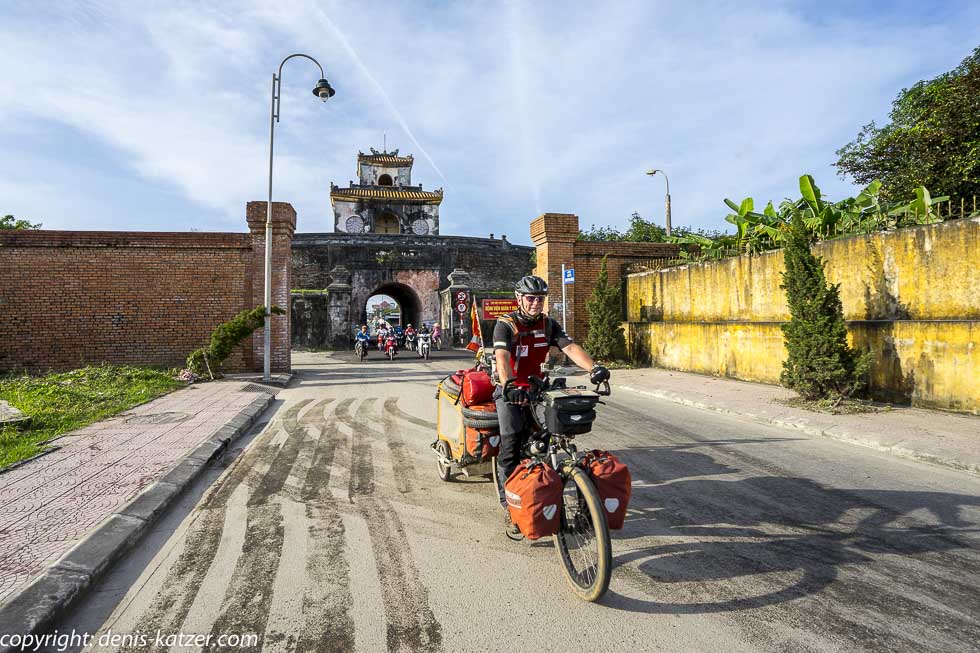
Flat land – Navigation
N 16°28'27.5'' E 107°34'46.3''
Date:
12.01.2017
Day: 562
Country:
Vietnam
Province:
Thừa Thiên-Huế
Location:
Hue
Latitude N:
16°28’27.5”
Longitude E:
107°34’46.3”
Daily kilometers:
89 km
Total kilometers:
21,489 km
As the crow flies:
65 km
Average speed:
21.7 km/h
Maximum speed:
37.3 km/h
Travel time:
4:05 hrs.
Soil condition:
Asphalt
Maximum height:
50 m
Total altitude meters:
58.499 m
Altitude meters for the day:
138 m
Sunrise:
06:20 a.m.
Sunset:
5:34 pm
Temperature day max:
25°C
(Photos of the diary entry can be found at the end of the text).
It poured with rain all night. I look out of the window at the hotel’s wet backyard. The weather forecast has also predicted rain for today. As the weather is expected to remain bad for the next few days, we can’t even sit out the wet. We load up our bikes and leave Đông Hà in the direction of the old imperial city of Hue. Because we traveled briefly to Laos, 100 kilometers away, the day before yesterday to activate our new Vietnam visa, our stay has been extended by another three months. Time that we urgently need to cover the almost 2,000 kilometers to the south coast of the country.
As soon as we sit in the saddle, the sun peeps out from between the clouds and the eternal rain decides to spare us its unpleasant humidity. We follow highway A1 for a while. We overtake a cyclist whose load looks as if he is also traveling a longer distance. We immediately stop to exchange a few words. “I drive from Hanoi to Ho Chi Minh City,” says the 60-year-old Spaniard, complaining about the bad traffic. “Are you on the A1 all the time?” “Yes, it’s the best road to Ho Chi Minh City, isn’t it?” “The best road? No, it’s the busiest road in Vietnam. Why don’t you take the Ho Chi Minh Highway? It’s quiet, almost tranquil and the landscape is almost always beautiful. We are only here to see a few important sights in this region. We’ll leave the coastal region again from the city of Hoi An at the latest and follow the Ho Chi Minh Highway south again.” “And how do I find it?” “Don’t you have a sat nav?” I ask in surprise. “No, just a smartphone and I’m not very familiar with the navigation app. It always takes me on a detour.” “And how do you find your way then?” “Ha, ha, ha, that’s very easy. I always ask Ho Chi Minh? Ho Chi Minh? Whereupon the Vietnamese give me directions with hand signals. But to be honest, I don’t like it here at all. The traffic is insane.” “Hm, I see. You’re just on the wrong road.” “I can see that if I go on another bike trip in the future, I won’t be traveling without a map and navigation.” “Good idea,” I reply with a laugh. Then we say goodbye and speed off. “That certainly frustrated him,” I say a little later. “You mean because we left him so mercilessly behind with our heavy load and trailer?” Tanja ponders. “Sure, he certainly hasn’t noticed that we’re on e-bikes. I’m sure he thinks we’re some kind of alien mutants with monster muscles pedaling against the wind at 25 km/h on such heavily loaded bikes and trailers,” I reply, laughing heartily.
We leave the A1 highway and continue on a country road with little traffic. “You’ve chosen a fantastically beautiful route for us,” says Tanja happily. “It’s a good thing that we work with Google Maps, a GPS, a map and a functioning smartphone app,” I reply and am happy to include these modern aids in our journey, as they enable us to find even the smallest traffic obstacles.
Endless expanses of water spread out to the left and right of the asphalt strip on the embankment. The continuous rain has dramatically flooded the fields here. Right next to us, fishermen stilt their narrow boats across the seemingly endless lake. While the helmsman steers the narrow wooden barge across the water with a long pole, the person standing at the front of the barge holds a stick in the water with a net on it. “I don’t believe it. They’re fishing with electricity!” I say as I recognize the system. In the middle of the rickety boat is a large car battery, from which a cable leads to the mains. As soon as fish come close to the net, they receive a violent blow and are therefore easy to catch. An extremely effective method that leaves the fish no chance.
Our path leads us through small villages with little houses lined up on both sides of the path. The hard-working farmers, who obviously live here, are in the partly flooded fields. Their three-wheeled tractor machines plow the soaking wet ground to prepare it for the rice seedlings that will soon be planted. Some women and men stand in the field with bare feet. They apply fertilizer or spray insecticides to drive away pests, inhibit their population or kill them. None of them seem to think about poisoning themselves in the process, as they stand barefoot in the water, sometimes up to their knees.
The images around us are constantly changing. Numerous Taoist, Buddhist temples shine out at us in their colorful splendor. Cemeteries with magnificent tombstones or entire tomb houses make us believe that only princes and princesses have found their eternal resting place here. The Vietnamese in this region must spend a fortune on their deceased, I think. “I’m hungry!” exclaims Tanja, which is why we stop at one of the many small, simple restaurants. It looks sad in the kitchen. Apart from a fish, a little rice and a single tomato, there is nothing. I order rice and the tomato. It tastes just as it looks. When we want to pay, the cook demands 100,000 dong. (4,13 €) In a restaurant in the city, a meal like this would cost around 20,000 dong (€0.83). “I can’t believe it. Now I don’t ask the price beforehand and I’m being ripped off here in a miserable village,” I say indignantly. Tanja shakes her head vigorously. “You won’t get more than 50,000 dong (€2.07),” she says firmly, whereupon the thin cook smiles and takes the money.
We don’t let it spoil our mood and cycle on. To our left, a high dune covered with trees and bushes rises up, protecting the flat hinterland from the raging Chinese Sea. We cross endless flooded rice fields, numerous other villages, many burial sites and colorful temples until we reach a wide road that leads us to the former imperial city of Hue after another dry, beautiful day of cycling. With many mopeds, we drive through a gate of the old city wall and end up in one of the most charming places in Vietnam due to its picturesque location on the Perfume River and the charming nearby hilly landscape. As the majestic citadel, elegant temples, the imperial residence, impressive fortresses and gates, some of the most imposing pagodas and magnificent imperial tombs await us here, we plan to stay a few days to catch a glimpse of the former splendor…
If you would like to find out more about our adventures, you can find our books under this link.
The live coverage is supported by the companies Gesat GmbH: www.gesat.com and roda computer GmbH http://roda-computer.com/ The satellite telephone Explorer 300 from Gesat and the rugged notebook Pegasus RP9 from Roda are the pillars of the transmission. Pegasus RP9 from Roda are the pillars of the transmission.
